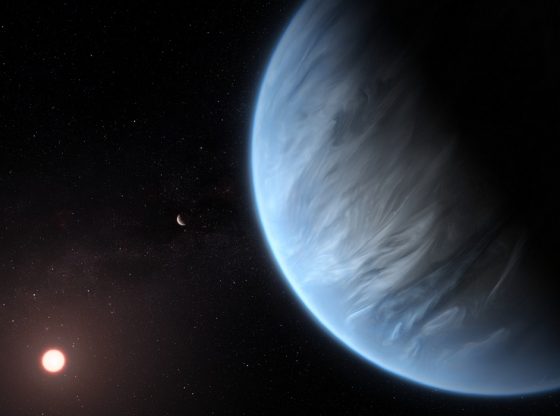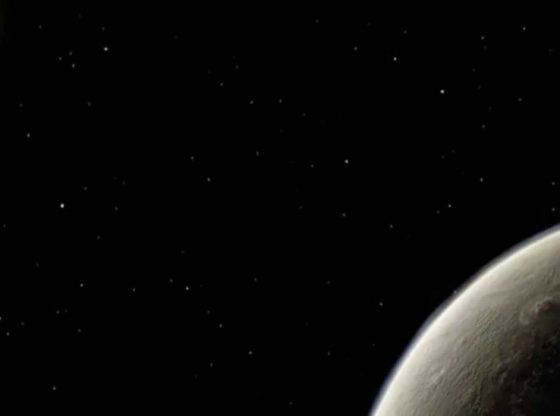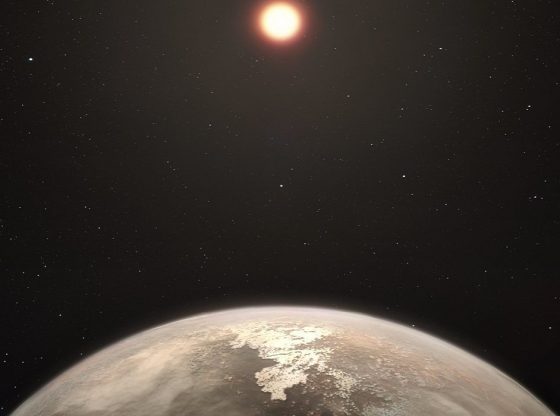
The newly discovered planet probably formed from an unstable disc around the young star, which broke up into clumps; This contrasts with how the majority of massive planets are believed to form, where a planet grows slowly as gas falls onto a solid core.
In accordance with the core accretion theory of planet formation, gas giants are less likely to form around low mass stars. But this newfound exoplanet orbit an M class dwarf star. This is the smallest type of stars.
They mostly emit faint lights in the near-infrared spectrum and that makes detection of orbiting exoplanets very difficult. But those planets that have been detected around such stars are mostly super-Earth and Neptune-mass exoplanets.
But now, astronomers have found a Jupiter-like planet orbiting a tiny red dwarf which is 12% the mass of the Sun. The team of researchers published their findings in a report titled, ‘A giant exoplanet orbiting a very-low-mass star challenges planet formation models’ in the journal Science.
The newly identified gas giant, named GJ 5312b, is nearly half as massive as Jupiter. But it is enormous relative to the small host star – which is little more than a tenth of the mass of the sun. These M-type red dwarfs are among the smallest and coolest stars. They are by far the most common type of star in the Milky Way. But only about 10% of the nearly 4,000 exoplanets discovered to date orbit these low-mass stars.
Normally the mass of a disk should be proportional to the mass of the young star around which it rotates. The fact that at least one gas giant — possibly two — was found around a star that’s so much smaller than our Sun indicates that either the original disk was enormous, or that core accretion does not work in this system.
The research team offers an alternative explanation of its formation. According to the astronomers, the planet probably formed from an unstable disc around the young star, which broke up into clumps. Their theory is that the gravitational instability of the protoplanetary disk – a circular cloud of gas and dust around young stars sometimes leads to the instantaneous formation of huge gas planets, irrespective of the size of the star.
“It’s a great vindication for the disk instability method and a demonstration how one unusual discovery can swing the pendulum on our understanding of how planets form,”
– Guillem Anglada-Escudé, IEEC research team’s members.
The researchers studied the star’s wobbling motion by collecting data from Calar Alto Observatory to discover the planets lopsided orbit. The team is trying to find the probable second planet and a third planet that was ejected from the system.
Reference:
J.C. Morales et al, 2019. A giant exoplanet orbiting a very-low-mass star challenges planet formation models. Doi: 10.1126/science.aax3198











![OpenAI. (2025). ChatGPT [Large language model]. https://chatgpt.com](https://www.illustratedcuriosity.com/files/media/55136/b1b0b614-5b72-486c-901d-ff244549d67a-350x260.webp)
![OpenAI. (2025). ChatGPT [Large language model]. https://chatgpt.com](https://www.illustratedcuriosity.com/files/media/55124/79bc18fa-f616-4951-856f-cc724ad5d497-350x260.webp)
![OpenAI. (2025). ChatGPT [Large language model]. https://chatgpt.com](https://www.illustratedcuriosity.com/files/media/55099/2638a982-b4de-4913-8a1c-1479df352bf3-350x260.webp)








